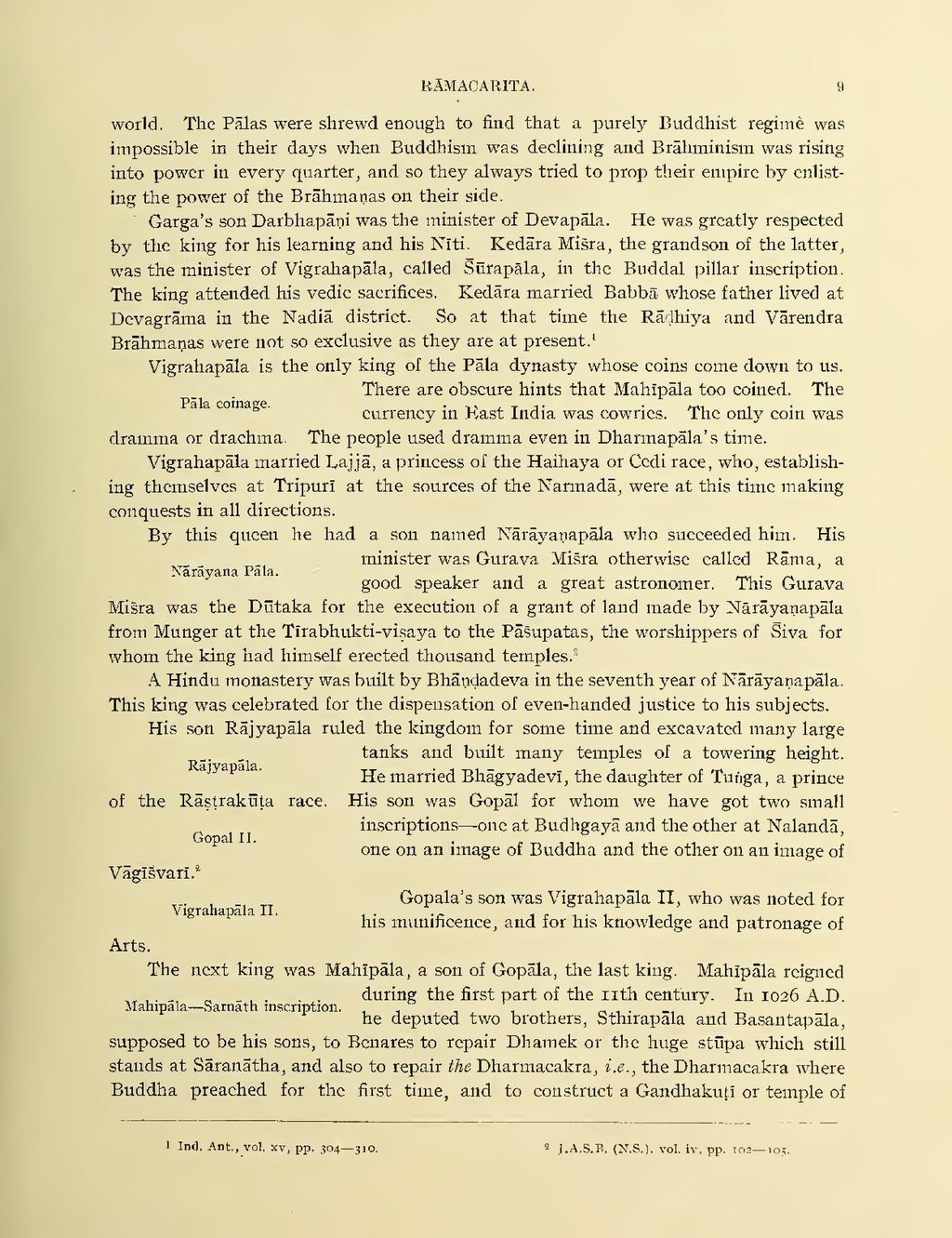world. The Palas were shrewd enough to find that a purely Buddhist regimè was impossible in their days when Buddhism was declining and Brahminism was rising into power in every quarter, and so they always tried to prop their empire by enlist- ing the power of the Brāhmaṇas on their side. Garga's son Darbhapāņi was the minister of Devapala. He was greatly respected by the king for his learning and his Niti. Kedāra Mišra, the grandson of the latter, was the minister of Vigrahapala, called Sūrapāla, in the Buddal pillar inscription. The king attended his vedic sacrifices. Kedara married Babbã whose father lived at Devagrama in the Nadia district. So at that time the Radhiya and Varendra Brāhmaṇas were not so exclusive as they are at present.¹ Vigrahapala is the only king of the Pala dynasty whose coins come down to us. There are obscure hints that Mahipala too coined. The currency in East India was cowries. The only coin was dramma or drachma. The people used dramma even in Dharmapala's time. Pāla coinage. RAMACARITA. Vigrahapala married Lajjā, a princess of the Haihaya or Cedi race, who, establish- ing themselves at Tripurī at the sources of the Narmadā, were at this time making conquests in all directions. Rajyapāla. of the Rāṣṭrakūta race. Gopal II. Narayana Pala. By this qucen he had a son named Nārāyaṇapāla who succeeded him. His minister was Gurava Misra otherwise called Rama, a good speaker and a great astronomer. This Gurava Misra was the Dutaka for the execution of a grant of land made by Nārāyaṇapala from Munger at the Tirabhukti-visaya to the Pasupatas, the worshippers of Siva for whom the king had himself erected thousand temples.³ A Hindu monastery was built by Bhändadeva in the seventh year of Nārāyaṇapāla. This king was celebrated for the dispensation of even-handed justice to his subjects. His son Rajyapāla ruled the kingdom for some time and excavated many large tanks and built many temples of a towering height. He married Bhagyadevi, the daughter of Tunga, a prince His son was Gopal for whom we have got two small inscriptions-one at Budhgaya and the other at Nalandā, one on an image of Buddha and the other on an image of Vāgišvari. 9 Vigrahapala II. Gopala's son was Vigrahapala II, who was noted for his munificence, and for his knowledge and patronage of 1 Ind. Ant., vol. xv, pp. 304-310. Arts. The next king was Mahipala, a son of Gopāla, the last king. Mahipala reigned during the first part of the 11th century. In 1026 A.D. Mahipala-Sarnath inscription. he deputed two brothers, Sthirapala and Basantapāla, supposed to be his sons, to Benares to repair Dhamek or the huge stupa which still stands at Saranātha, and also to repair the Dharmacakra, i.e., the Dharmacakra where Buddha preached for the first time, and to construct a Gandhakuti or temple of 2 J.A.S.B. (N.S.). vol. iv, pp. 102-103.

